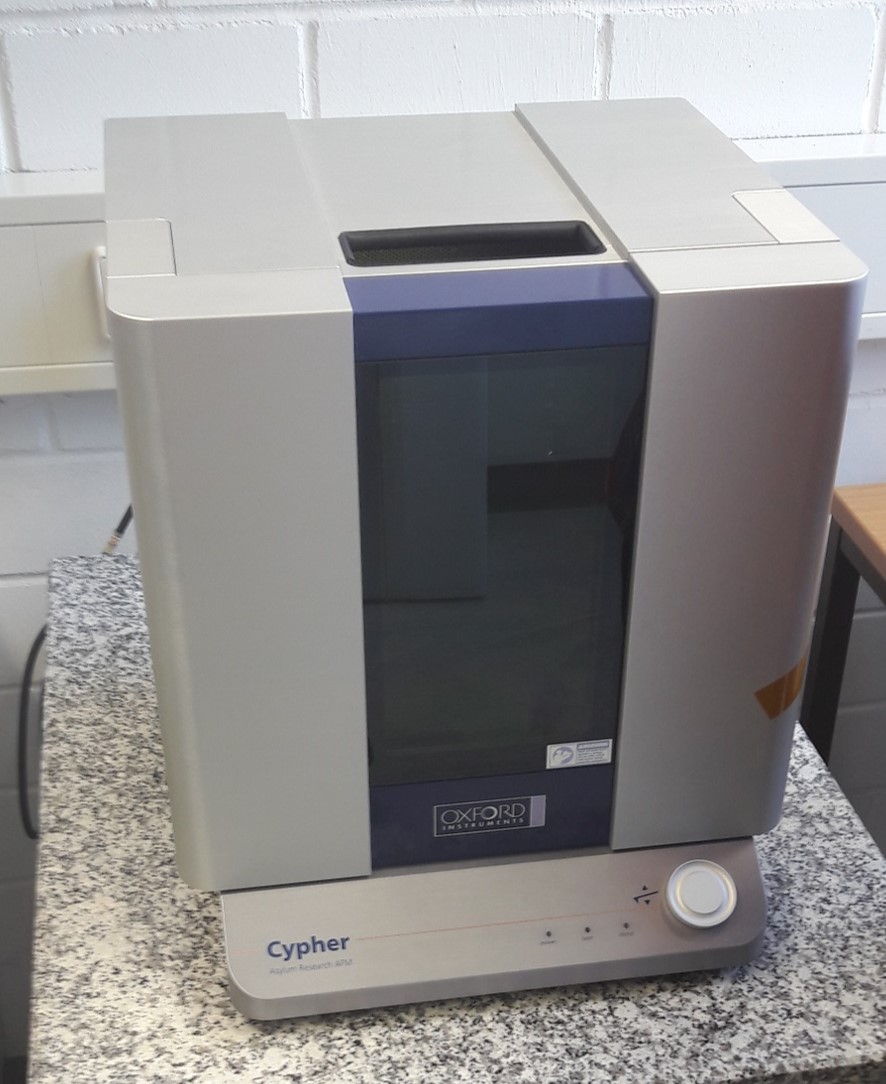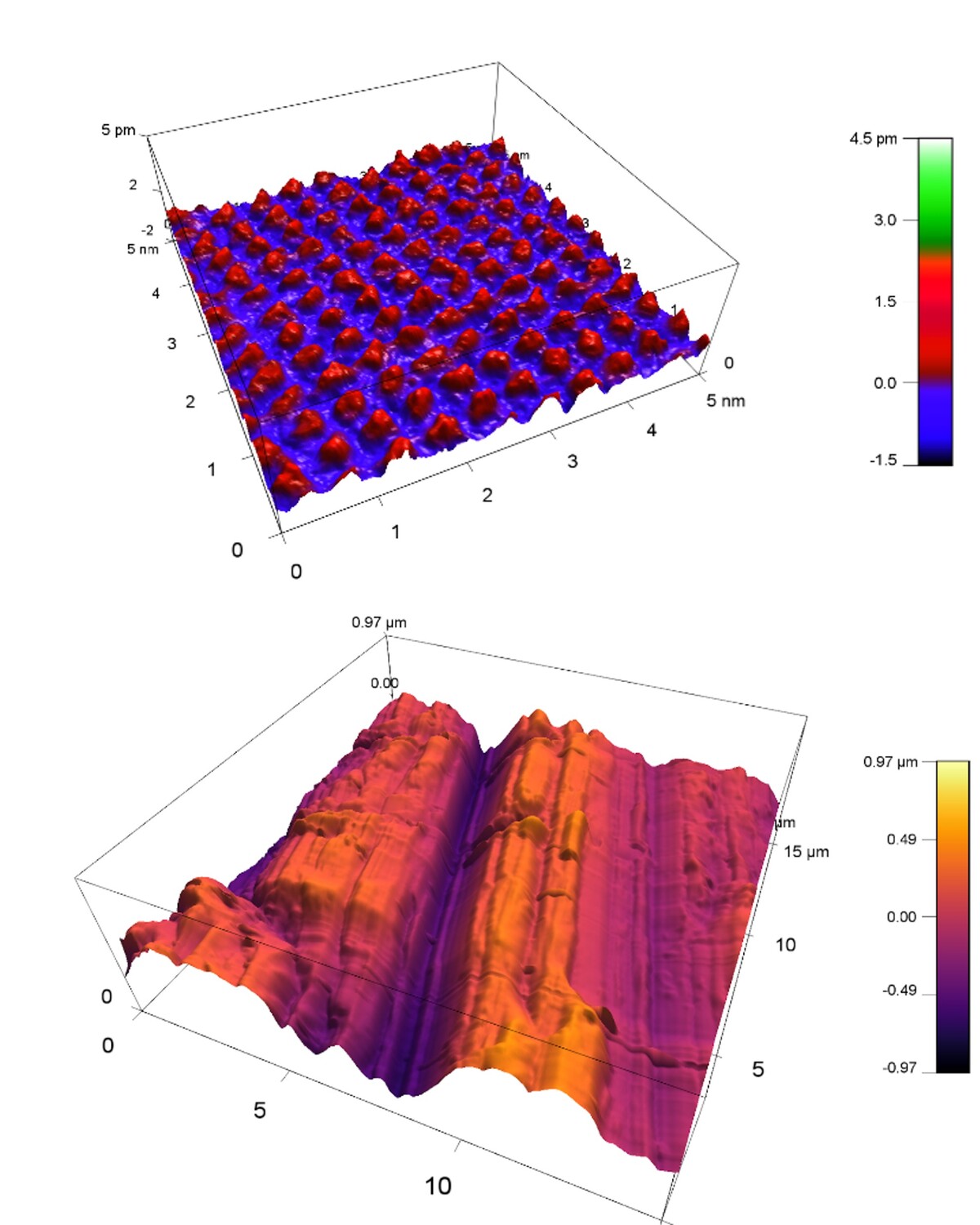Surface analysis by atomic force microscopy (AFM)
Atomic Force Microscopy (AFM) allows to measure structures on solid surfaces. In-situ measurements in solution allow monitoring of changes during chemical reactions like crystal growth and dissolution or corrosion. At INE, a Cypher VRS-1250 AFM from Oxford Instruments with various extras like an electro-chemistry cell and the force mapping option is available (Fig. 1). Various measurement modes and scan rates up to video-rate-scanning may be realized. Figure 2 depicts the available range of scales from atomic resolution images of a calcite single crystal surface to relatively large-scale roughness measurements on a polished steel surface.
Contact:
Dr. Frank Heberling +49 721 608 24782


